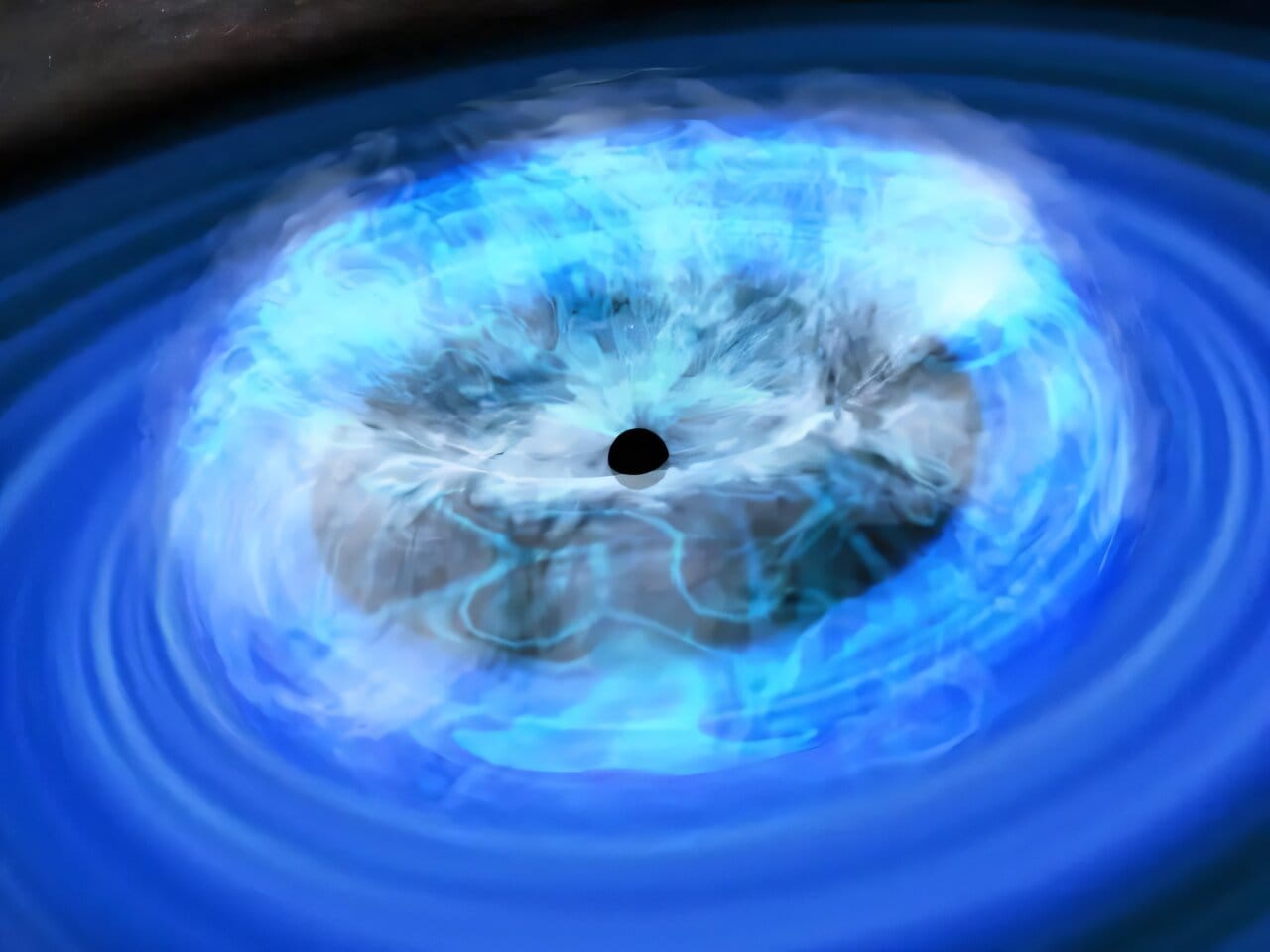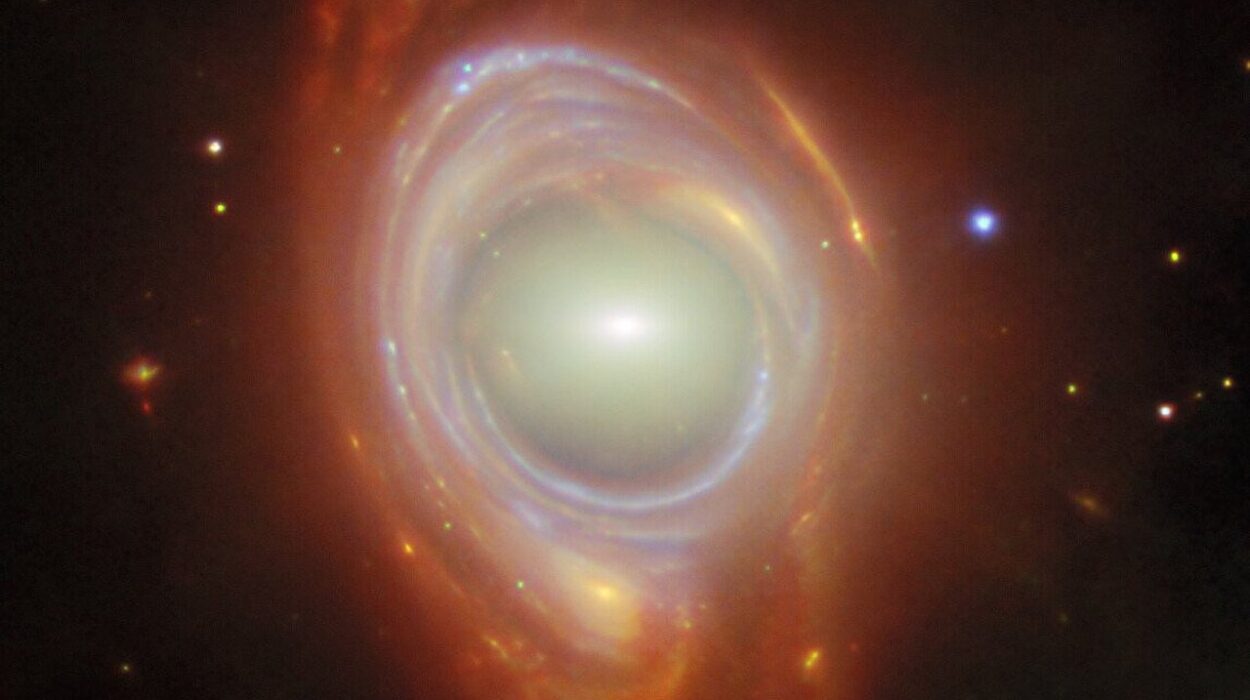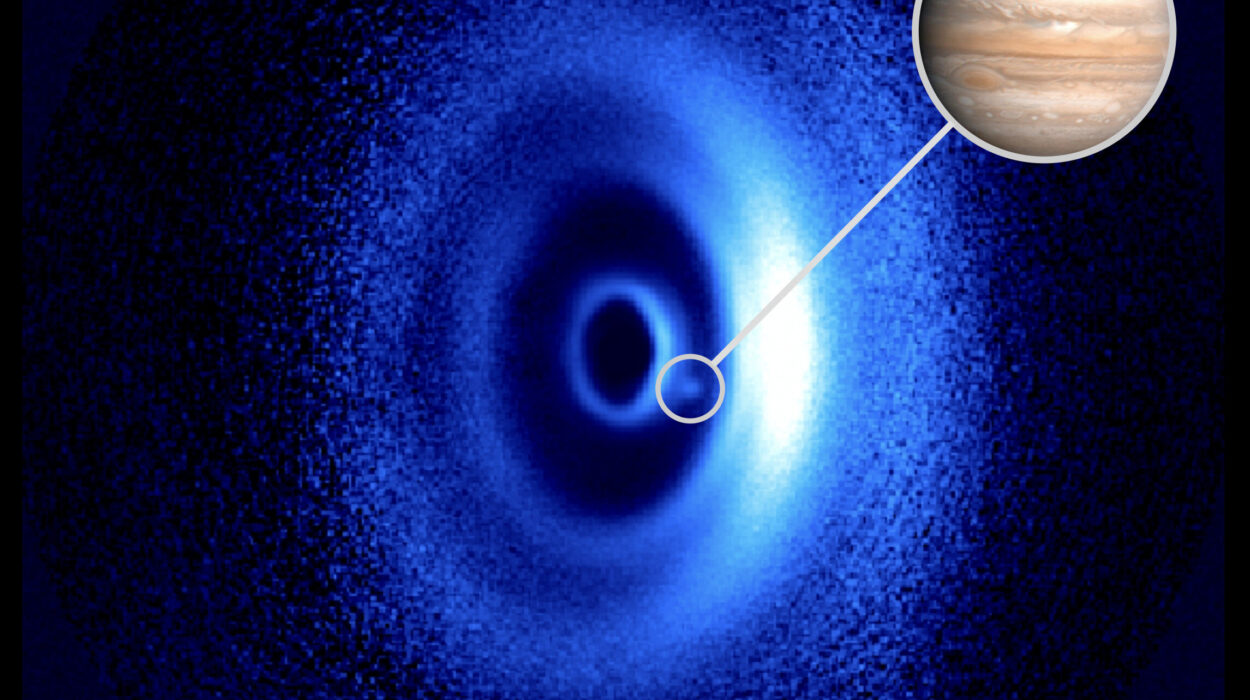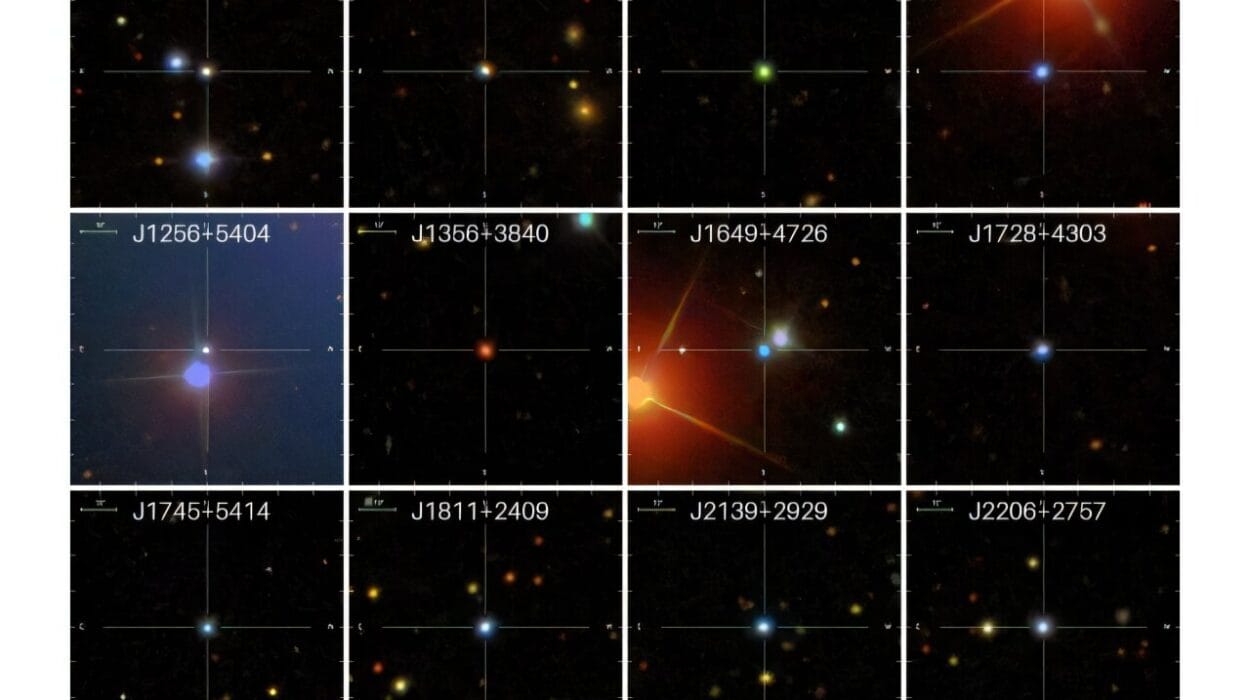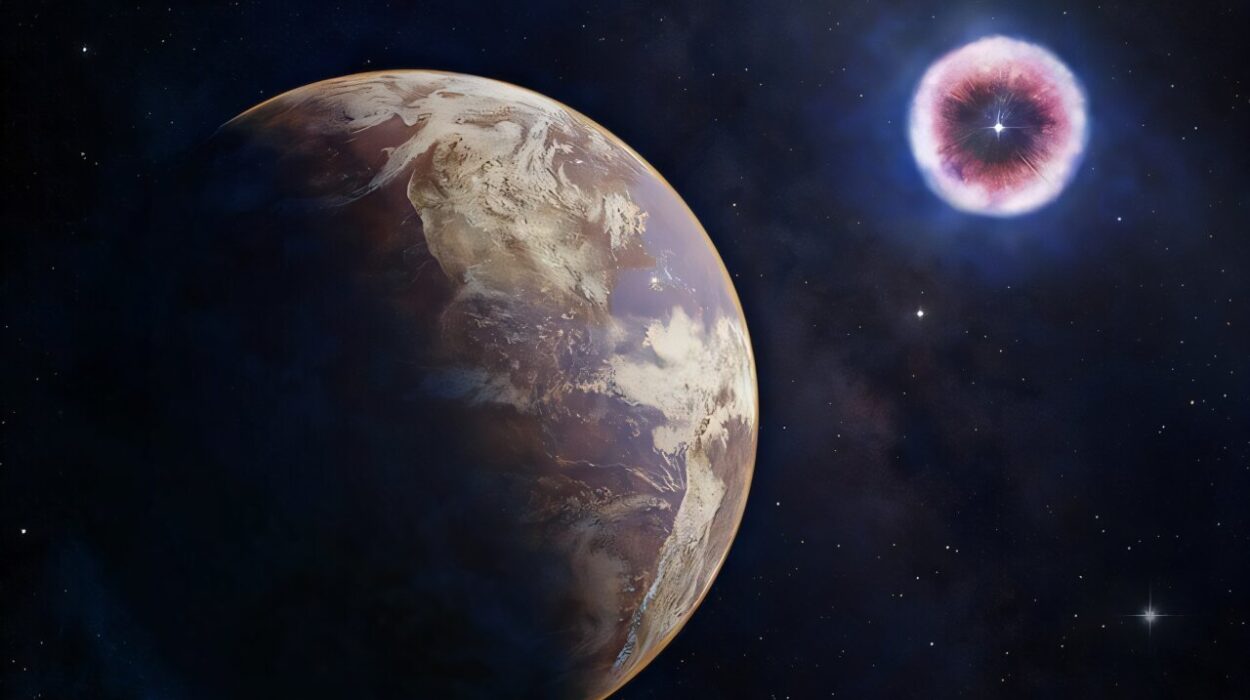Sometimes, the universe reveals its secrets not when scientists are looking for them, but when they stumble upon them by accident. This is exactly what happened to an international team of astronomers led by Matus Rybak of Leiden University. In their search for cold gas in a distant galaxy, they instead uncovered compelling evidence that mysterious millimeter radiation—an elusive form of light—comes from the very edge of a supermassive black hole.
This breakthrough, now accepted for publication in Astronomy & Astrophysics and available on the arXiv preprint server, marks the first time astronomers have proven that millimeter radiation is generated so close to a black hole’s core. And it happened thanks to an unexpected gift from nature: a rare “double zoom” effect that sharpened their cosmic vision.
The Quasar in Question
The story begins in 2015, when Rybak and his colleagues turned their attention to a galaxy called RXJ1131-1231, located in the constellation Crater, billions of light-years from Earth. At its center lies a quasar—a galaxy powered by a supermassive black hole that devours matter while blasting out incredible amounts of light and energy.
RXJ1131-1231 has long been a favorite target of astronomers because the universe itself has set up a natural telescope for us. Between Earth and the quasar lies another galaxy, perfectly aligned to bend and magnify the quasar’s light. This cosmic trick, known as gravitational macrolensing, makes the galaxy appear three times larger than it really is.
But what Rybak’s team found went far beyond what they expected.
The Smoking Gun of Microlensing
Using the Atacama Large Millimeter/submillimeter Array (ALMA) telescope high in the Chilean desert, the researchers were initially focused on detecting cold gas. Instead, they noticed something unusual: the three magnified images of the quasar—produced by macrolensing—did not brighten and dim in sync. Each image changed independently.
For astronomers, this was a smoking gun. The culprit was microlensing, a second magnification effect caused when an individual star in the foreground galaxy drifts directly into the line of sight. The star acts like an additional magnifying glass, temporarily boosting and distorting the light from behind.
“We immediately knew we had to pursue this further,” said Rybak.
This rare alignment meant the team had not just one magnifying glass but two stacked together: the foreground galaxy and the individual star. This “double zoom” effect allowed them to peer into details far too fine for even the most advanced telescopes on Earth.
Watching a Black Hole Flicker
In 2020, the team returned to RXJ1131-1231, carefully tracking the flickering light from the quasar. What they saw was astonishing: the quasar’s emission in millimeter radiation changed over years, brightening and dimming like a cosmic heartbeat.
This was remarkable because millimeter radiation is usually associated with calm, cold gas and dust—quiet regions of galaxies, not the violent hearts of quasars. Something unusual had to be happening near the black hole.
The best explanation? The flickering radiation was coming from the corona, a turbulent, magnetized, doughnut-shaped band of hot plasma swirling close to the supermassive black hole itself. Until now, astronomers had never been able to prove that millimeter radiation could be traced back to such extreme environments.
From Dust to Fire: A Scientific Leap
Before this discovery, millimeter radiation near black holes remained mysterious. Was it simply the glow of dust clouds? Or could it be evidence of violent, high-energy processes? Thanks to microlensing, the answer is finally tilting toward the latter.
By capturing millimeter radiation so close to the black hole, Rybak’s team has opened a new window into how these cosmic giants shape their galaxies. The radiation is not merely a byproduct—it holds clues about the temperature, density, and magnetic fields in the black hole’s immediate neighborhood.
In the words of Rybak, “With this double zoom, it’s as if you’re placing two magnifying glasses on top of each other.” The result: a direct glimpse into a region that even our best instruments would otherwise blur into invisibility.
Building on Decades of Work
This discovery did not happen in isolation. Rybak’s colleagues, including Dominique Sluse (Leuven) and Frédéric Courbin (Barcelona), had already pioneered microlensing techniques in visible light back in 2008. Seventeen years later, the same method has now been extended into the millimeter spectrum for the first time—unlocking a new level of precision in black hole research.
Their work represents a bridge between different wavelengths of light, each carrying unique information. Visible light reveals one side of quasars; millimeter radiation now exposes another. Together, they give scientists a more complete picture of what happens when gravity, magnetism, and matter collide at the edge of a black hole.
What Comes Next
The discovery is just the beginning. The team has already been awarded time on NASA’s Chandra X-ray Observatory, which will allow them to probe the quasar in even higher energy light. By combining X-rays, millimeter radiation, and gravitational lensing, they hope to map the conditions in the black hole’s corona in unprecedented detail.
Why does this matter? Because the environment near a supermassive black hole doesn’t just affect the black hole itself—it influences the entire galaxy surrounding it. The winds, jets, and radiation from the black hole can either trigger star formation or snuff it out, shaping the evolution of galaxies across billions of years. Understanding the corona, therefore, is not just about understanding black holes—it’s about understanding how galaxies like our own Milky Way came to be.
A Cosmic Dance of Light and Gravity
At its heart, this discovery is a story about nature’s generosity. By sheer chance, a galaxy and a star lined up with Earth in just the right way to create a double magnifying glass. Through this cosmic coincidence, humans on a small planet billions of light-years away were able to peer into the invisible heart of a quasar.
It is a reminder that science often advances not only through careful planning and powerful instruments but also through serendipity. When the universe offers us a gift, the challenge is to recognize it and learn from it.
Looking Into the Abyss
Supermassive black holes are often described as monsters—objects of terrifying gravity that swallow light itself. Yet discoveries like this one show they are also teachers, revealing fundamental truths about the universe.
By proving that millimeter radiation originates near a black hole’s core, Rybak and his team have added a new tool to humanity’s cosmic toolkit. They have shown that with patience, creativity, and a little cosmic luck, we can look deeper into the abyss than ever before—and find it flickering with light.
More information: M. Rybak et al, Detection of millimeter-wave coronal emission in a quasar at cosmological distance using microlensing, arXiv (2025). DOI: 10.48550/arxiv.2503.13313
